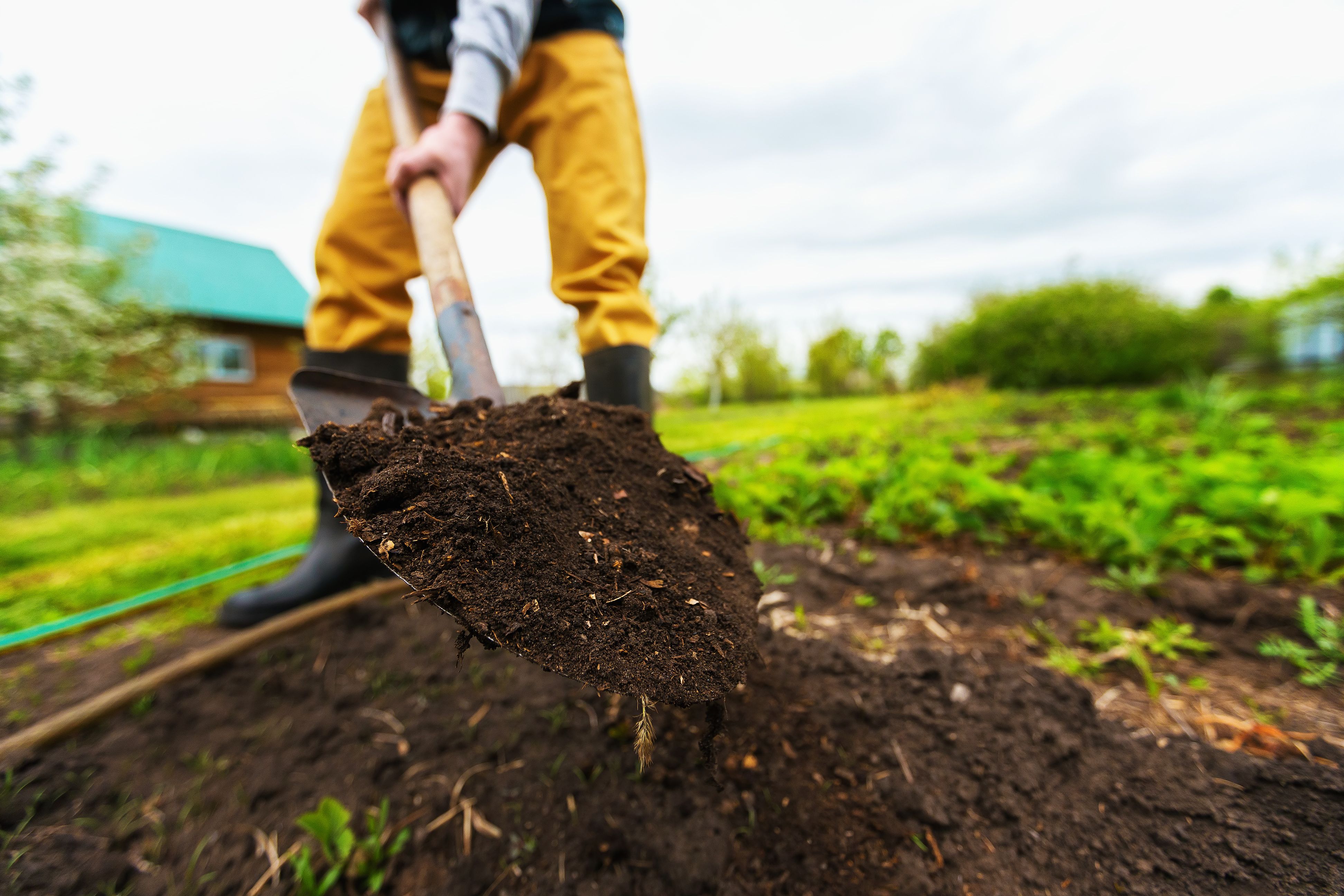New Machine Learning Model Identifies High-Risk Areas for Cobalt Contamination in U.S. Soil
A recent study from Central South University in China examined how to assess cobalt content in soil.
A new study from Central South University in China showcased the development of a new approach for identifying cobalt (Co) contamination in soil using advanced machine learning (ML) techniques. The findings of this study were published in the Journal of Environmental Chemical Engineering (1).
Co is a transition metal on the periodic table. It is considered an essential micronutrient for human beings and for plants (2). However, the questions that scientists are still pondering is how much Co is good for plants before it becomes toxic (3). There is a need for a nondestructive, inexpensive, and rapid method to help detect Co contamination in plants.
Gardener is digging soil with a shovel at spring green outdoors background. | Image Credit: © vitanovski - stock.adobe.com

Historically, the identification of Co contamination has been limited to small-scale studies and simplistic analytical methods, leaving large areas underassessed (1). Chongchong Qi and his research team at Central South University explored a new method to determine cobalt contamination by leveraging eight different ML algorithms combined with visible and near-infrared (NIR) reflectance spectroscopy to create a robust, large-scale model capable of accurately classifying Co content in soil (1).
Qi and his team referred to data set of 18,675 topsoil samples, which they collected and analyzed to train and validate the models (1). To improve the performance of the tested models, the researchers deployed two methods: principal component analysis (PCA) and rigorous hyper-parameter tuning (1). These improvements were measured using multiple evaluation indicators to ensure the highest accuracy and reliability (1).
Among the various ML models the researchers tested, the eXtreme Gradient Boosting (XGB) algorithm performed the best, with an area under the curve (AUC) value of 0.901 on the training set and 0.904 on the testing set (1). These results indicate a high level of precision in distinguishing between contaminated and non-contaminated samples.
Following the model training and validation, the optimal XGB model was applied to a comprehensive United States soil spectral data set. This application revealed several states, including Utah, Arizona, New Mexico, North Dakota, Arkansas, Mississippi, and Alabama, as having a higher risk of Co contamination (1). These findings are crucial for environmental managers and policymakers because they highlight specific regions where intervention and remediation efforts may be urgently needed (1).
This study also lays the groundwork for future research in this space. The methodology and framework developed by Qi’s team can be adapted for the detection and assessment of other hazardous elements in soil, thereby broadening the scope of environmental protection efforts (1). This study exemplifies how cutting-edge technology can be harnessed to address complex environmental challenges, ultimately contributing to safer and healthier ecosystems (1).
As cobalt is increasingly used in various industrial applications, including rechargeable batteries and aerospace components, understanding its environmental impact becomes ever more important. The ability to accurately detect and map cobalt contamination on a large scale ensures that potential risks to human health and the environment can be managed proactively (1). By combining machine learning algorithms with spectral analysis, they have developed a powerful tool for identifying and managing cobalt contamination in soil.
References
(1) Zhou, N.; Hu, T.; Wu, M.; et al. Comparative analysis of machine learning algorithms for identifying cobalt contamination in soil using spectroscopy. J. Environ. Chem. Eng. 2024, 12 (5), 113328. DOI: 10.1016/j.jece.2024.113328
(2) Hu, X.; Wei, X.; Ling, J.; Chen, J. Cobalt: An Essential Micronutrient for Plant Growth? Front Plant Sci. 2021, 12, 768523. DOI: 10.3389/fpls.2021.768523
(3) Srivastava, P.; Bolan, N.; Casagrande, V.; et al. In Appraisal of Metal(loids) in the Ecosystem, Chapter 5 - Cobalt in soils: sources, fate, bioavailability, plant uptake, remediation, and management. 2022, 81–104. DOI: 10.1016/B978-0-323-85621-8.00007-8
LIBS Illuminates the Hidden Health Risks of Indoor Welding and Soldering
April 23rd 2025A new dual-spectroscopy approach reveals real-time pollution threats in indoor workspaces. Chinese researchers have pioneered the use of laser-induced breakdown spectroscopy (LIBS) and aerosol mass spectrometry to uncover and monitor harmful heavy metal and dust emissions from soldering and welding in real-time. These complementary tools offer a fast, accurate means to evaluate air quality threats in industrial and indoor environments—where people spend most of their time.
Smarter Sensors, Cleaner Earth Using AI and IoT for Pollution Monitoring
April 22nd 2025A global research team has detailed how smart sensors, artificial intelligence (AI), machine learning, and Internet of Things (IoT) technologies are transforming the detection and management of environmental pollutants. Their comprehensive review highlights how spectroscopy and sensor networks are now key tools in real-time pollution tracking.
New AI Strategy for Mycotoxin Detection in Cereal Grains
April 21st 2025Researchers from Jiangsu University and Zhejiang University of Water Resources and Electric Power have developed a transfer learning approach that significantly enhances the accuracy and adaptability of NIR spectroscopy models for detecting mycotoxins in cereals.